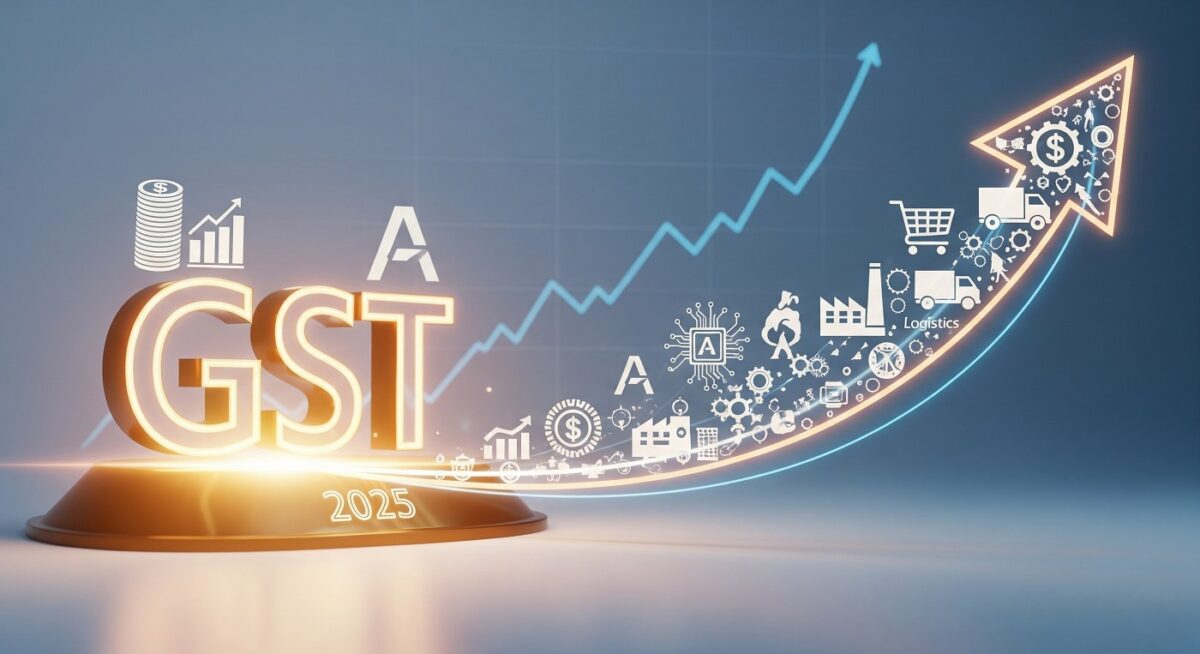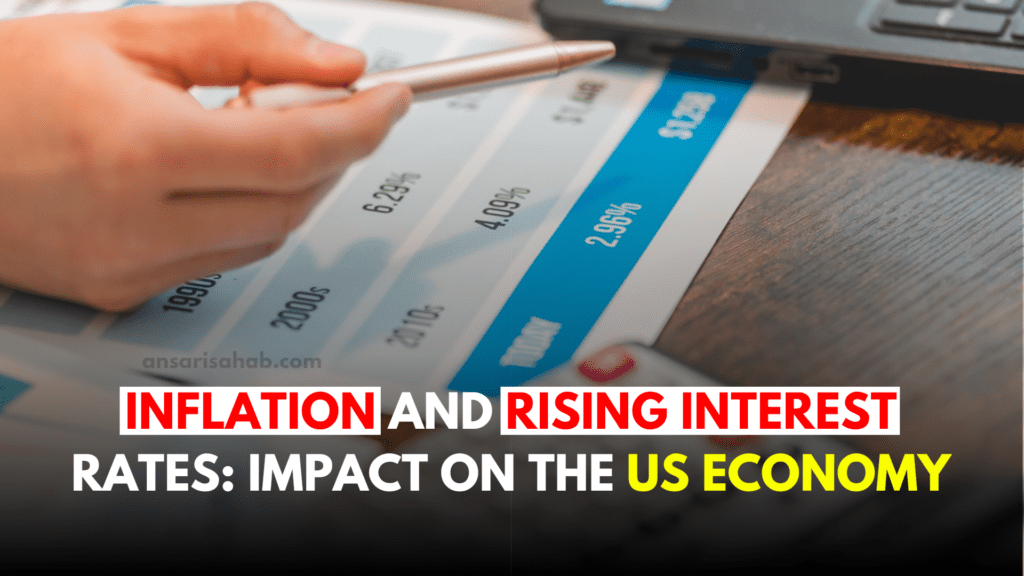India is on the cusp of its most consequential indirect-tax overhaul since 2017. GST Reforms 2025 are poised to simplify slabs, cut rates for mass-market goods, and possibly exempt life and health insurance premiums from GST. With the 56th GST Council meeting slated for September 3–4, 2025, rate rationalisation and compliance simplification are front and center on the policy agenda.
In this investor-ready guide, we decode what is officially on the table, pull in fresh commentary from ministers, brokerages, and policy analysts, and translate it into clear sector and stock implications—so you can align your watchlist ahead of the Council’s decisions.
What the latest reports say (and why it matters)
- Two-slab GST structure (5% & 18%): A Group of Ministers (GoM) has cleared a proposal to replace the 4-slab system (5/12/18/28) with two slabs—5% and 18%—plus a special ~40% rate for “sin/luxury” items. This aligns with the Centre’s push to simplify GST and cut rates. The GST Council will take a final call in the September session.
- Council timeline: The 56th Council meets Sep 3–4, 2025; the officers’ meet is on Sep 2. Expect rate decisions and compliance relief to be the headline items.
- Insurance GST relief: A GoM has proposed GST exemption for individual life and health insurance premiums (currently 18%). Experts flag that loss of input tax credit (ITC) could partially offset benefits for insurers, influencing pricing and margins.
- Consumer durables, autos, cement in focus: Broker and industry chatter indicate possible moves from 28% down to 18% on ACs, two-wheelers, and cement, among others—potentially lowering prices and spurring demand.
- Real estate/building materials: Media reports suggest cheaper cement (and possibly steel) could improve housing affordability and developer cash flows, though premium fittings caught in a 40% “sin/luxury” bucket could face higher costs.
- Macro lens: Simplification/cuts are expected to ease inflation and support consumption, with economists pointing to growth and potential room for rate cuts downstream.
- GSTAT (GST Appellate Tribunal): Key appointments are underway to operationalise GSTAT, which should reduce litigation uncertainty and speed dispute resolution—a medium-term positive for corporate India.
- EV vs ICE twist: Reports indicate no change for EVs (5% GST), but small ICE cars could land at 18% (vs 28%+cess), potentially tilting near-term demand back toward ICE hatchbacks.
Sector-by-sector winners from GST Reforms 2025
Note: Final impacts depend on Council decisions and implementation timelines. The analysis below reflects current proposals/expectations from credible news and policy sources.
1) Consumer Durables & Electronics (Air Conditioners, Large TVs, Appliances)
- What could change: ACs and larger TVs potentially shift from 28% to 18%; many other appliances already at 18% stay put, while select 12% items may move to 5%.
- Why it matters: A 10% point tax cut on ACs/large TVs would directly lower sticker prices, helping penetration beyond metros—especially into hot-climate tier-2/3 markets.
- Stock lens: Consumer-durables makers, contract manufacturers, and cooling specialists stand to benefit from a festive-season demand kicker and better operating leverage.
2) Automobiles (Two-wheelers, Small Cars) — and the EV nuance
- What could change: Two-wheelers and small ICE cars are in the spotlight for rate cuts; EVs remain at 5%, but cheaper small ICE vehicles at 18% could narrow the TCO gap in the near term.
- Why it matters: Price elasticity is high in mass auto. Lower upfront costs can unlock pent-up demand in rural and semi-urban markets.
- Stock lens: Two-wheeler OEMs and entry-segment car makers could see volume tailwinds, while EV-heavy portfolios might face short-term demand diversion.
3) Cement & Building Materials (Real Estate Beneficiaries)
- What could change: Cement potentially to 18% (from 28%), with talk of relief on steel as well.
- Why it matters: Cement is a big cost line for infrastructure and housing. A rate cut could reduce project costs, accelerate housing affordability, and improve developer cash flows.
- Stock lens: Cement producers (scale and distribution leaders) and listed developers gain from volume visibility, margin lift, and faster inventory churn.
4) Insurance (Life & Health)
- What could change: Full GST exemption on individual policies (vs 18% now) is proposed. But ITC loss may force insurers to rework pricing, with analysts estimating 6–10% impact depending on cost structures.
- Why it matters: For consumers, post-tax premiums should drop; for insurers, the margin math is complex—distribution, product mix, and cost controls become key.
- Stock lens: Life/health insurers could see new business tailwinds (penetration gains), tempered by margin recalibration during the transition.
5) FMCG & Packaged Foods
- What could change: With a move to two slabs, many 12% items may slide to 5%, lowering MRPs and boosting throughput.
- Why it matters: Price cuts in staples/packaged foods can drive volume recovery and support rural consumption—already sensitive to inflation.
- Stock lens: Branded foods & personal care names could benefit from mix upgrades and share gains versus unorganised players.
6) Real Estate (Indirect Play)
- What could change: Cheaper cement/steel improves EPC economics and housing affordability; however, if premium finishes were classified near the 40% bucket, luxury bill of materials may see selective cost pressure.
- Why it matters: Lower input costs + stable demand cycle = improved pre-sales and faster launches.
- Stock lens: Large, well-capitalised developers and building-products suppliers (tiles, pipes, wires) stand to benefit.
7) Logistics & Consumption Enablers
- What could change: Slab simplification reduces classification disputes; expected consumption uplift feeds higher throughput in logistics, 3PL, and warehousing.
- Stock lens: Integrated logistics, warehouses, and e-commerce enablers gain from volume operating leverage.
Compliance & Litigation: The underrated catalyst
Even beyond rates, operationalising the GST Appellate Tribunal (GSTAT) can be a structural win. Recent appointments and rules notifications point to “hearings starting soon”, unlocking speedier dispute resolution and lower legal overheads—especially for sectors with complex ITC chains (manufacturing, infra, services). Over time, policy certainty can lift multiples for companies previously saddled with GST litigation overhangs.
Potential speed bumps to watch
- State revenue concerns: Some states warn rate cuts could dent revenues, reviving calls for compensation—which could slow rollout or tweak rate lists.
- EV policy coherence: If small ICE cars get friendlier rates while EVs remain unchanged at 5%, near-term EV demand could flatten in entry segments. Policymakers may offset with FAME-like incentives or targeted state subsidies.
- Insurance pricing transition: Exempting GST without ITC could compress margins and complicate product repricing for insurers in FY26.
Illustrative stock shortlists (by theme)
These are illustrative and not investment advice. Always assess valuations, risk, and your time horizon.
- Consumer Durables & Electronics: Cooling & appliance leaders, contract manufacturers, component suppliers (potential AC/TV rate benefits).
- Autos (mass segments): Two-wheeler and entry-car OEMs (price-sensitive categories benefit first). EV-exposed portfolios may see tactical competition at the low end.
- Cement & Materials: Scale players with pan-India reach; building-products (tiles/pipes/wires) as operating-leverage plays.
- Insurance: Life & health insurers (new business tailwinds vs margin re-set risk). Watch commentary on ITC treatment and distribution costs.
- Real Estate Developers: Large balance sheets, premium projects + affordable housing beneficiaries if materials get relief.
- Logistics: Volume-linked names positioned for consumption-led throughput.
Actionable checklist for investors (search intent: “how to play GST Reforms 2025”)
- Track the September 3–4 Council outcomes: Rate schedules, item-wise mapping (especially ACs, two-wheelers, cement), and insurance exemption decision.
- Watch company commentary in management updates for pricing pass-throughs, inventory re-stickering, and festive demand guides (durables, autos).
- Model sensitivity: For tax-cut candidates, flex demand + margin assumptions (price elasticity; channel incentives). For insurers, run margin scenarios with/without ITC.
- Litigation overhangs: Names with large GST disputes could re-rate as GSTAT ramps, reducing cash drains.
- Macro read-through: A softer inflation impulse from tax cuts can buttress consumption and support rate-cut hopes, a net positive for rate-sensitives (housing, autos, consumer finance).
Content gaps your competitors are missing (use these to rank faster)
- Insurance ITC math explained simply: Most posts stop at “GST exemption = cheaper premiums.” Create a worked example comparing pre/post-exemption pricing with distribution cost assumptions—addressing Macquarie’s 6–10% price-impact risk if ITC is denied.
- EV vs small ICE scenario analysis: Simulate 5-year total cost of ownership across small EV vs small ICE under the proposed slabs, factoring charging costs and resale values.
- Developer bill-of-materials breakdown: Map how a cement cut to 18% and selective “luxury” finishes at ~40% change per-sq-ft costs by housing segment.
- GSTAT heatmap: Build a sector-wise litigation tracker to quantify potential provision reversals and cash flow unlocks as benches go live.
Include these angles in your post-publishing updates to outrank generic news rewrites.
FAQs
A. A two-slab GST (5% & 18%) with a ~40% rate for a small “sin/luxury” list, plus compliance simplification and a push to activate GSTAT. Final item-wise mapping awaits the September 3–4, 2025 GST Council meeting.
A. If the Council approves GST exemption for individual life & health policies, post-tax premiums should drop; however, insurers may adjust pricing due to loss of ITC. Net impact will vary by product and insurer cost structure.
A. Consumer durables (ACs/large TVs), autos (two-wheelers/small cars), cement/building materials, FMCG, and listed developers appear best placed if proposed rate cuts go through. Insurers may see volume gains but margin recalibration.
A. State revenue concerns and compensation debates can influence timelines; nonetheless, high-level political backing raises reform odds.
A. EVs remain at 5% GST. If small ICE vehicles shift to 18%, some near-term demand could swing back to ICE, though long-term EV adoption depends on total cost, charging infra, and state policies.
Bottom line
- Simpler slabs and targeted cuts can unlock consumption in ACs, autos, FMCG, and housing ecosystems, while insurance could see a volume boost if GST is exempted—albeit with margin trade-offs.
- Policy certainty via GSTAT is a structural positive, lowering litigation risk across sectors.
- Stay tuned to the Sep 3–4 Council for item-wise schedules, and be ready to re-rate models the moment categories are finalised.









